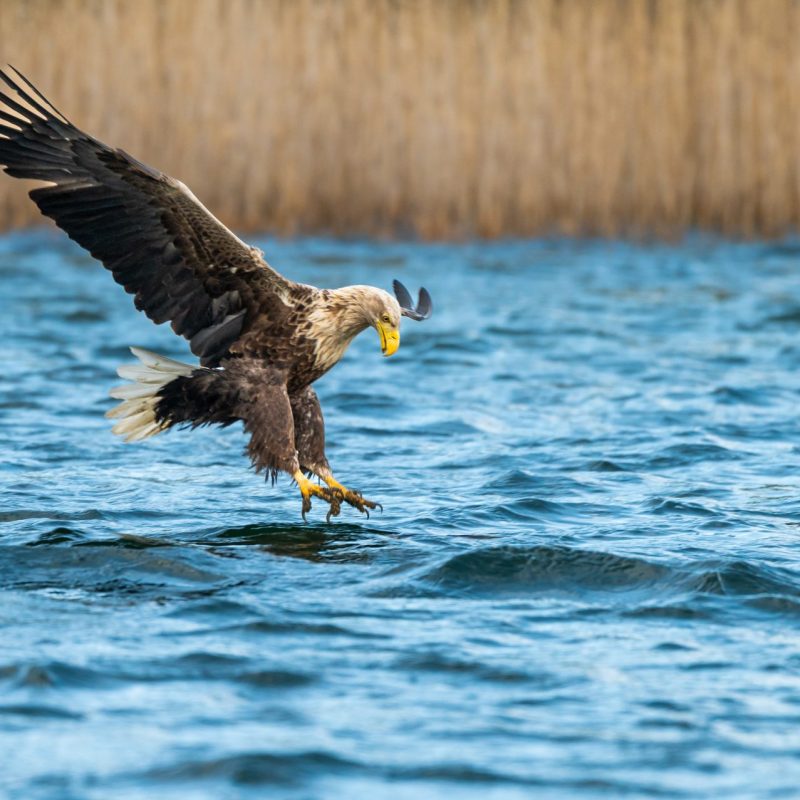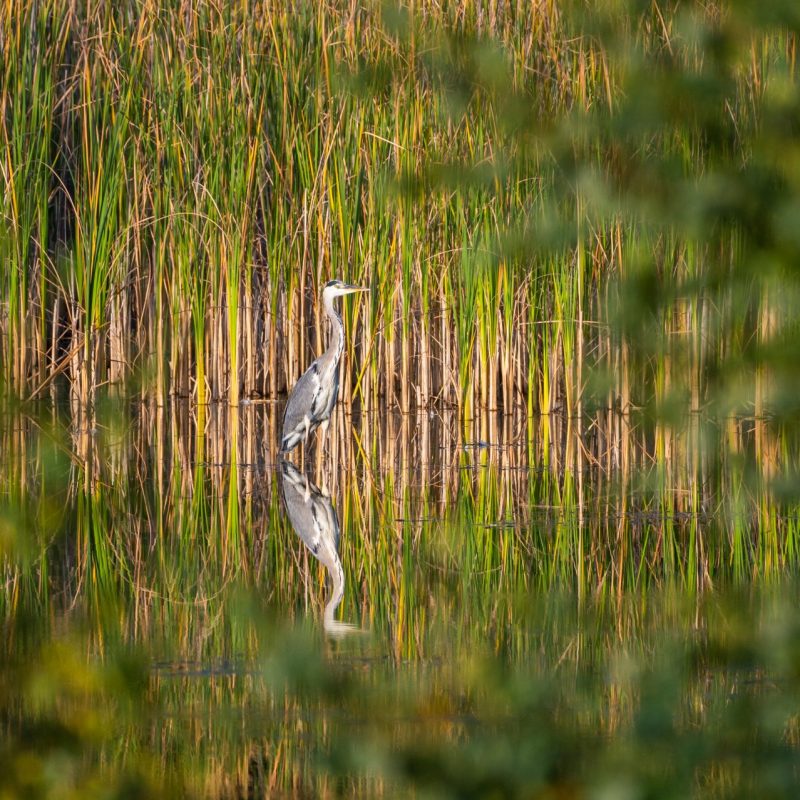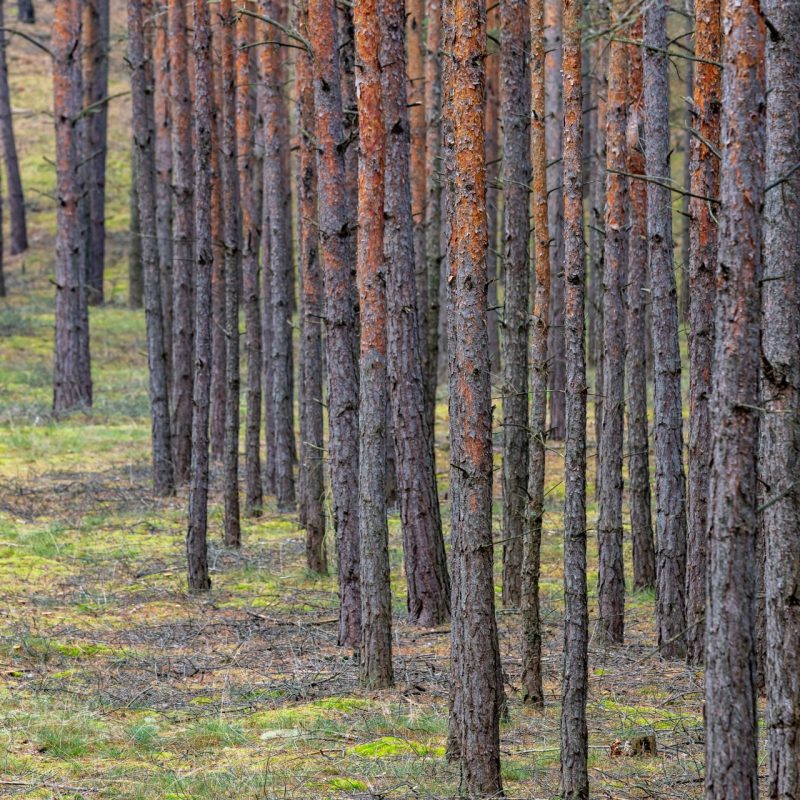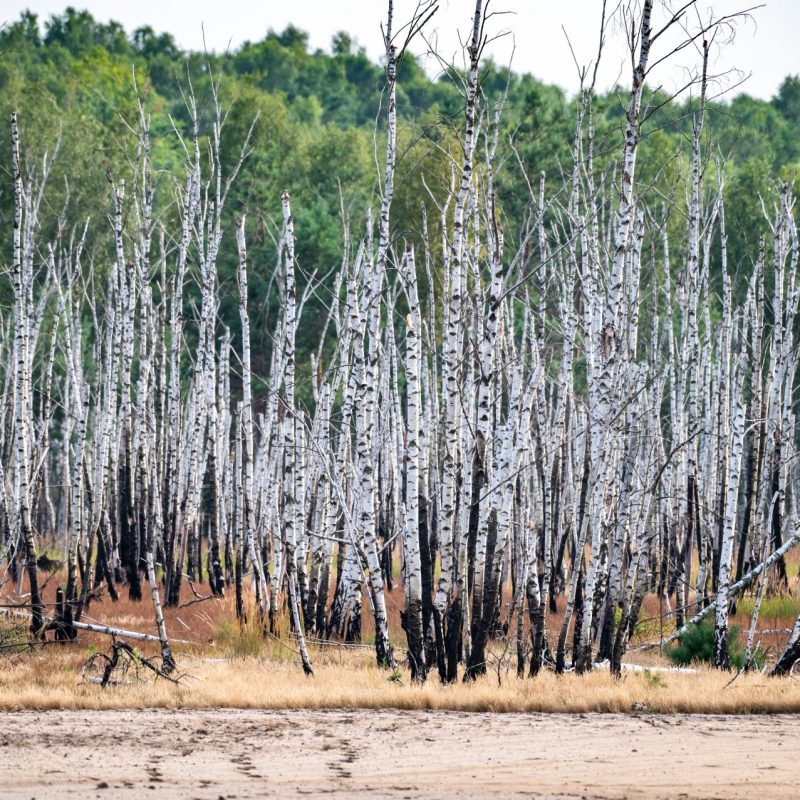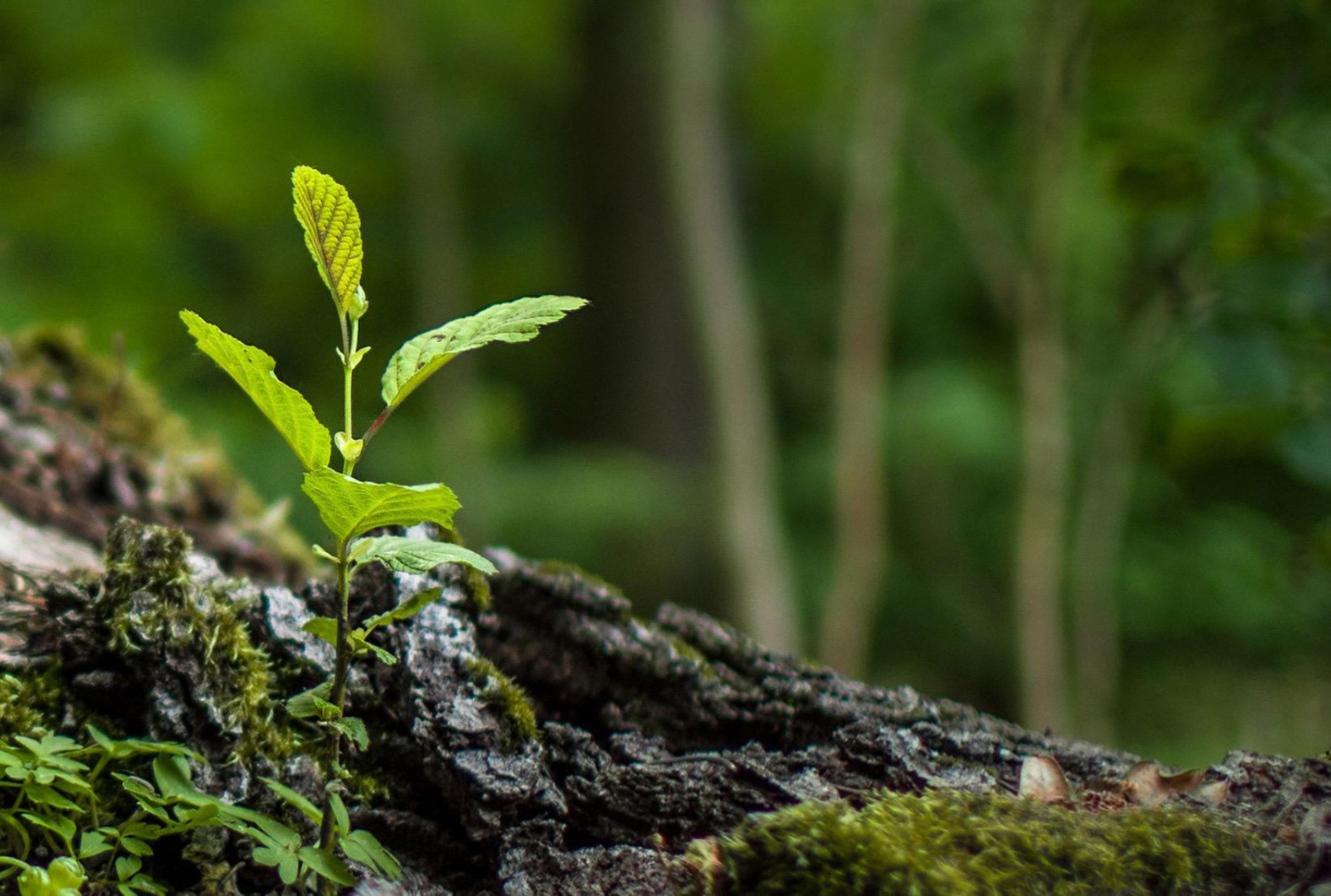Welcome to the Wilderness Trail
From short family outings to day trips – wilderness for every occasion
Whether you are a nature-loving hiking enthusiast, a curious child or a walker seeking peace and quiet, the wilderness trail has something for everyone. The gently winding Dragonfly Trail leads past the Butzener Bagen moor, where you can observe numerous dragonflies in summer – iridescent and light as jewels in the air. Two benches invite you to linger – with a direct view of the moor. Whether it’s a short two-kilometre walk around the mountain lake or an extended 15-kilometre tour on the Käuzchenweg trail – on the wilderness trail, everyone can find their own way to connect with nature.
The Lieberoser Heide
Explosive legacy
The Lieberoser Heide stretches over 25,500 hectares. From 1942 to 1992, a large part of the area served as a military training area. After the withdrawal of the troops, the area remained largely untouched but contaminated with explosive ordnance.
Unrivalled natural beauty
The Lieberose wilderness area forms the heart of the Lieberoser Heide – a unique landscape in Germany. Nowhere else are moors and lakes so close to dry grassland and heathland. Here we can observe how nature is returning to an area that was once heavily influenced by man and creating new life.
Naturwelt
Naturwelt Lieberoser Heide has set itself the task of bringing the beauty and diversity of Lieberoser Heide to life for visitors. The regional development project promotes nature-friendly tourism, for example by creating new cycle paths and hiking trails.

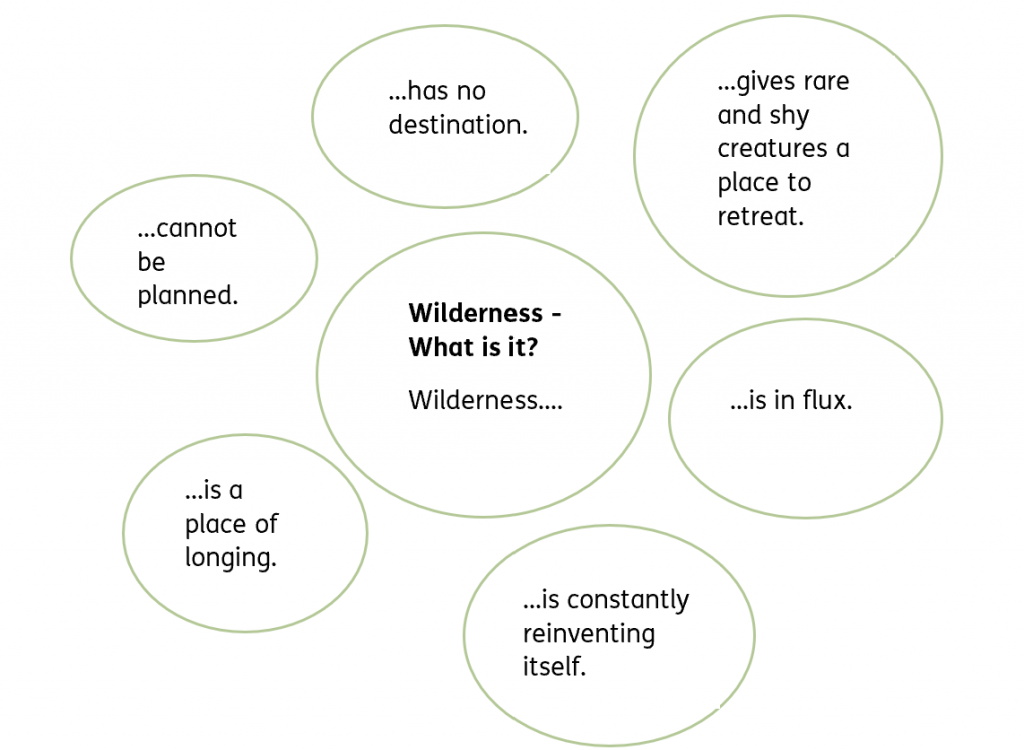
Do you also love wilderness?
Support us with a donation for environmental education and nature experience.
Welcome to the wilderness trail!
We, the Foundation for Natural Landscapes Brandenburg – The Wilderness Foundation, were founded in 2000 to enable the development of wilderness on former military training areas. These old, mostly Soviet, military training areas have the special feature, that they are very large and are not cut by public roads. This allows large, connected wilderness areas to develop. The glacial character of the landscape and historical forms of utilisation
have created a variety of biotopes that provide habitats for numerous species – including rare and protected ones. In the Lieberose wilderness area, you can expect wide open spaces, colourful carpets of flowers, tranquil lakes, enchanted moors and rustic forests – a landscape that will captivate you.
Discover the fascination of the wilderness on the wilderness trail!
Nature reserve with munitions contamination
As the wilderness areas are located on former military training areas, there are many contaminated sites in the form of munitions. Only forest firebreaks and hiking trails are completely demilitarised.
For the benefit of people and nature: make sure you stay on the marked paths.
Waterbirds
Water birds at the lake Bergsee
With a bit of luck, you can observe various water birds here at the lake Bergsee:
Schwäne: A pair of mute swans breed on the lake Bergsee and defend their breeding territory against other swans.
Graureiher: Grey herons often linger in the reeds and wade through the shallow water, always on the lookout for fish, amphibians and mussels.
Fischadler: The osprey can be found feeding at the mountain lake. With scrutinising eyes, it keeps an eye out for fish before swooping down towards the lake to catch one.
Schellenten: In german this duck is named after a bell-like sound they make when flying (Schellente). Goldeneyes breed their young in tree hollows, which they find in the surroundings of the lake Bergsee.
Eisvogel: The kingfisher is best recognised at by its call when it flies along the reed belt. Sometimes it can also be observed sitting on a branch.
Animal action in the moor
Reptiles face challenges in the moor. In the cool environment, the cold-blooded animals move more slowly than on warm sand and heathland. Warmth is also crucial for egg-laying: The eggs only survive if they stay warm. Some reptiles use a trick to get offspring to, in the cool moor: they keep the eggs in their belly and seek out sunny spots. In this way, the little reptiles are born alive, as it were. This adaptation exists, for example, in the common lizard, which is called ovoviviparous. The moor is a special habitat. Here it always remains wet and much cooler than in the surrounding area.
You can discover these animals in the moor:
Under the left flap you can see a lace patch.
Under the second flap from the left you can see a crane.
The second flap from the right conceals a wood lizard.
There is a grass snake under the right-hand flap.
Tree Hollows
Wanted: Cave with a view
Tree hollows are more important than you might think. They offer many species breeding and nesting opportunities, and are also very popular as sleeping places.
Master builder woodpecker and his tenants
Tree cavities are usually created by woodpeckers, which carve them into the wood with their powerful beaks. However, nature also forms them itself: dead branches break off and the knotholes rot out. Depending on their size, the cavities attract different inhabitants. Not only birds such as woodpeckers, tits and starlings use them, but also bats, squirrels, dormice, spiders, hornets and beetles. The mulm (shavings in the caves) is particularly important for insects. Endangered beetle species find food and reproduction areas there.
Tree cavities in the wild
In commercial forests, where trees rarely grow old, there is a lack of tree cavities. There is fierce competition for the existing ones. In wilderness areas, trees are allowed to grow old and there is a suitable tree cavity for all requirements. Have you already discovered one?
How a woodpecker cavity is created:
I wonder who lives in these caves?
A great spotted woodpecker is hiding in the upper cave.
A pine marten sits in the middle one.
A bat hangs out in the lower cave.
Deadwood - a place full of life
Deadwood is teeming with life. It provides shelter, food and building material for a wide variety of species. Insects lay their eggs in the old bark. The larvae decompose the wood. This releases bound nutrients and serves as humus for the rest of the plant world. Often a new tree grows on a deadwood trunk. Deadwood also prevents the soil from drying out, equalises temperature fluctuations and humidity and thus promotes a good microclimate. A distinction is made between lying deadwood (fallen trees) and standing deadwood (dead, but standing trees).
Who lives in dead wood?
A blood-red click beetle can be seen under the left-hand tile.
Under the tile to the right is a stag beetle.
The second tile from the right shows a musk longhorned beetle.
Under the tile on the right you can see a lesser stag beetle.
Deadwood ...
… can often be recognised by the large mushroom consoles, which grow on the bark. The actual fungi sit underneath and decompose the substances that keep the wood stable. Once the lignin and cellulose have decomposed, the tree falls over.
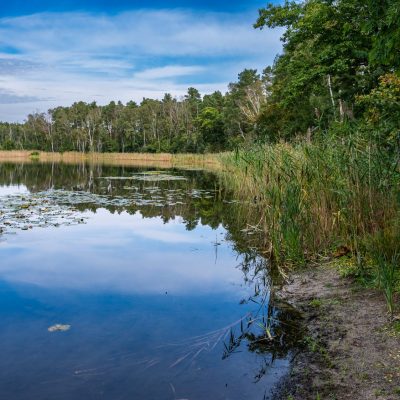
Ice Age relic: Lake Ugringsee
Can you spot the surface of Lake Ugringsee in the distance?
It’s not big, but it’s up to 18 metres deep!
Shaped by glaciers
The Ugringsee was formed during the Ice Age and lies in a terminal moraine landscape. Hills characterise this area because the glacier pushed rock in front of it. Drainage channels of the glacier water break through the rock wall. Over the course of time, water collected in these gullies, creating lakes such as the Ugringsee.
Invisible dynamics
Lakes that are deeper than one metre show a typical zonation. The open water zone in the centre is divided into three layers:
The uppermost layer remains in motion and quickly adapts to the ambient temperature. The middle layer, the thermocline, has a strong temperature gradient. The lowest layer, the bottom layer, maintains a constant 4° C. In winter, fish, crustaceans and molluscs retreat to this layer as it remains frost – free.
How does a natural mixed forest develop?
If you think of a typical Brandenburg forest, the first thing that comes to mind is probably the image of a pine forest. Other tree species are difficult to find. In a natural mixed forest, however, many tree species of different ages grow. In order to promote this, the proportion of pines has been reduced in the past. This gives other tree species space to colonise. Wind and animals spread the seeds that germinate between the pines. This gradually creates a species-rich mixed forest. Stormy weather and varying nutrient and water supplies cause the trees to grow in different ways or even topple over completely. This does not happen in all places at the same time; this results in a variety of different old and tall trees. In the wilderness area, the trees are allowed to grow old, until they finally fall over and make room for young trees.
Our largest moor: the Große Zehme
At 34.6 hectares, the Große Zehme is the largest moor area in the Lieberose wilderness area. It provides an important habitat and refuge for endangered species.
How does a bog form?
A bog is formed when there is an impermeable clay layer in the soil and a lake forms. Due to the constant water saturation and the lack of oxygen, dead plant remains do not decompose completely. The biomass collects as a layer of mud in which peat formation begins – this is how a fen grows.
Utilisation and renaturation
Like many moors in the Lieberoser Heide, Große Zehme was previously drained by ditches and exploited for peat extraction. Renaturalisation began in 2015: the ditches were closed, to keep the water in the moor. However, the forest fire 2022 and the persistent drought of recent years have also taken their toll on this moor.
Only for specialists - the moor
Only plants that can cope with low levels of nutrients and acidic moor water can survive in the moor.
Sour makes you inventive
In order to survive in the acidic, nutrient-poor moor water, some plants have developed clever strategies. The sundew, a small bog plant, is an example of this. It uses its sticky catch leaves to attract insects, which get stuck and are digested after the leaves close.
Small moss big time
Peat mosses absorb many times their surface area in water and act like sponges. This is how they keep the bog moist. If the mosses die, they sink below the surface of the water and form the peat together with other plant remains. The remains do not decompose under water as there is no oxygen available.
- Drained moor: When a moor is drained, plant remains and peat reach the surface and begin to rot. In the process, the carbon stored for centuries.
- Wet moor: Intact moors act as CO2 sinks: they store large quantities of carbon in thick layers of peat and provide a home for many rare animals and plants. However, only 2 % of German moors are still untouched.
- Why is the water in bogs acidic? Peat mosses, the typical plants of moors, exchange ions. They release hydrogen ions from and in return absorb other positively charged ions such as calcium from the moor water. In this way, they enrich the water with hydrogen ions, which makes it increasingly acidic.
Forest fire protection in the wilderness
Forest fires are no longer a rarity in Brandenburg. However, they only occur naturally in exceptional cases. Around 95 % of fires are caused by human activity. They release large amounts of CO2 and other greenhouse gases, destroy vegetation and humus layers – a heavy burden on the environment. To prevent this, we have set up forest fire protection systems on all our wilderness areas. Their maintenance is one of the central tasks of our foundation. In Lieberose, we laid out a protective strip around six kilometres long and 30 to 50 metres wide.
Further measures in the wilderness area:
- Creation of extinguishing water extraction points and wells
- Exercises with the fire brigade and police
- Informing visitors about the risk of forest fires and correct behaviour in dry conditions
- Regular area inspections when the risk of forest fires is high
Prevent forest fires:
- No open fires!
- Observe the smoking ban!
- Use designated car parks!
- Do not leave paths!
Succession - a dynamic process
Open sandy landscapes 1 form the starting point of succession. It is difficult for plants to gain a foothold in the loose, hot sand, which is why only a few, well-adapted first colonisers occur here. When the first colonisers form a closed cover, dry grasslands 2 develop, mainly consisting of mosses, lichens and grasses. Silver grass, which is reminiscent of a sea urchin, is a typical representative. The plant roots protect the soil from erosion. After the grasses, larger plants, especially various types of heather, develop into heaths 3 . Their nectar is an important source of food for wild bees, butterflies and other insects. Here you can discover a pioneer forest 4 . It also provides shelter for larger animals and creates habitats for roe deer, stags and wolves. In dense stands, low-growing, light-loving species are becoming increasingly rare. Further along the trail, you will see mixed forest stands 5 , which are quite resistant to pest infestation and fires thanks to their biodiversity. Foxes, roe deer and wild boar can be found here alongside black woodpeckers and jays. Deadwood and tree hollows provide special habitats within the forest. Although the development appears straightforward, age, wind and drought repeatedly return areas to earlier stages of succession. Succession therefore remains a natural, dynamic process that cannot be predicted.
Soil areas free of vegetation arenaturally colonised by plants and animals over the course of time. Undemanding species (initial colonisers) improve the soil for other, more demanding organisms. This process is called succession.
Historic narrow-gauge railway: the ‘Bimmelguste’
Have you noticed that the path has been running along an old railway embankment for some time? The Spreewald railway once ran here, also known as the ‘Spreewaldguste’ or ‘Bimmelguste’. This small railway with a track gauge of just 1,000 mm was initially pulled by horses. Later, a small steam locomotive was used. Since its opening in 1898, the Spreewald railway mainly transported goods through the Lieberoser Heide towards the Spreewald and Schwielochsee. From 1950, commuters and holidaymakers also made intensive use of the railway, whose centre of operations was in Straupitz. However, the line from Lieberose to Byhlen was closed as early as 1964. Six years later, the entire small railway operation came to an end.
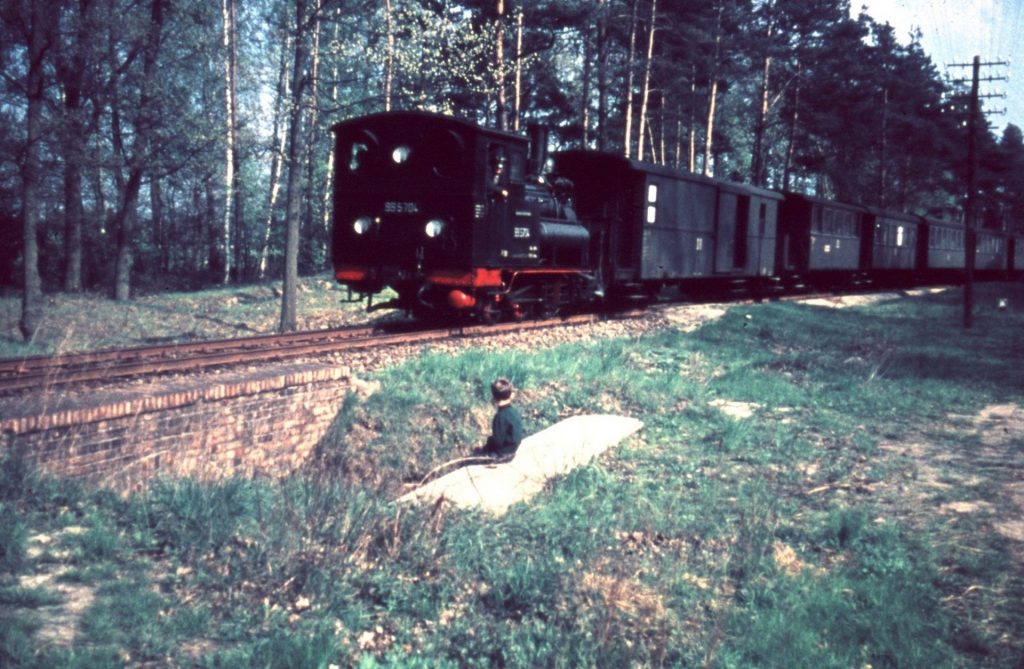
Picture: Filmzirkel Straupitz
Line opening: 29.06.1898
Total route network: 85 km
Freight traffic: 1898-1968 (timber, foodstuffs, livestock, fertiliser, turf iron ore, coal, agricultural products)
Post (until 1930)
Construction costs: RM 2,720,000
Passenger traffic: 1898-1970
Houwald's hunting lodge
Count von Houwald’s hunting lodge was located around 100 metres to the south. A forestry map from 1913 also shows an oak garden next to the house. This stand of oaks is still clearly recognisable today right next door. The count stayed in the ‘Jagdschlößchen’ with hunting guests and family. Food and drink for the hunting party was delivered directly from the manor house in Straupitz. Today, the entrance to the ice cellar of the hunting lodge on the Große Zehme can still be found. The house itself was dismantled in 1946 and later rebuilt in Straupitz.
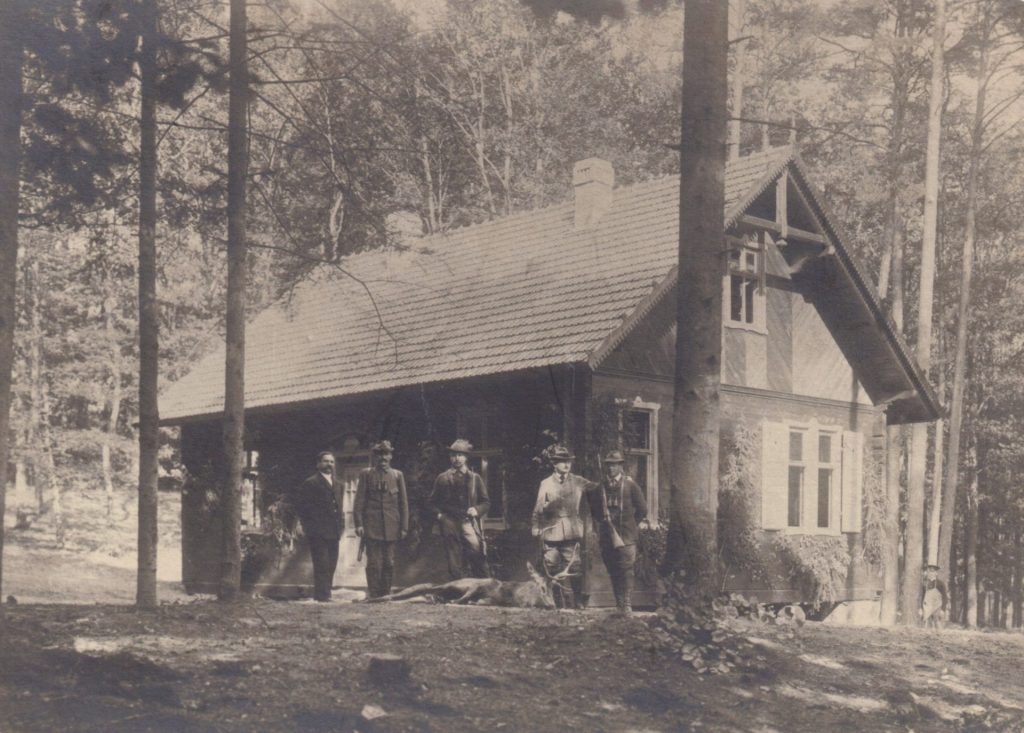
Picture: Sammlung Raband & Urspruch
Mystical Beyerberg
There are several myths surrounding the naming of the Beyerberg. Which of the explanations convinces you the most?
- „The Beyer, a strong boar, was up to mischief there, which was also killed on this mountain.“
- „The Germanic tribes had listening posts positioned here. They rang a large bell in case of danger. This was called beyern.“
- „There was a monk’s chapel on the mountain. The monks called the service by hitting with a wooden hammer on a board. This was called beyern.“
Contact
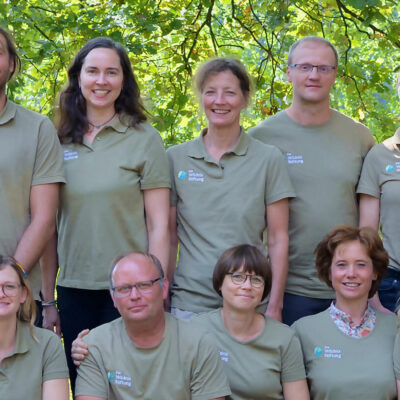
Wildnisstiftung
Geschäftsstelle Potsdam
E-Mail: info@stiftung-nlb.com
Tel.: +49 (0) 331 – 7409322
Mobil: +49 (0) 331 – 7409323


